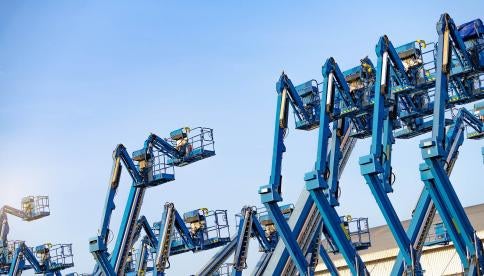Construction workers are exposed to hazards and dangerous conditions on job sites every day. Often the danger comes from the very equipment they are required to use. One such piece of equipment is the scissor lift or aerial lift. I know this because I have personally litigated cases involving serious injuries and even death resulting from scissor lift accidents.
The dangers associated with scissor lifts are well-known in the construction industry. According to the U.S. Centers for Disease Control & Prevention (CDC), approximately 300-400 workers suffer injuries each year from scissor and aerial lift accidents. On average, 20-25 workers are killed each year while operating scissor lifts, aerial lifts, and other similar equipment.
The most common types of scissor or aerial lift accidents involve falls, power lines, tip-overs, and pinning or crushing accidents, where the operator is pinned or crushed between the lift and another object. These accidents are largely preventable if project owners, contractors and safety representatives take the time to ensure strict compliance with OSHA safety standards, manufacturers’ operation and safety manuals, and the contractor’s own internal safety policies and procedures.
A common problem is that project owners and contractors are often unfamiliar with applicable OSHA safety standards. They fail to review the manufacturers’ operation and safety manuals. They fail to ensure the workers read the operation and safety manuals. Contractors and their safety representatives frequently fail to develop and implement internal safety policies and procedures, and simply assume construction workers will know how to safely operate scissor and aerial lifts. Project owners and contractors often fail to provide workers with the necessary and proper safety equipment, such as fall protection devices and safety harnesses.
Contractors often rent scissor and aerial lifts from construction equipment rental companies. The rental company then delivers the lift to the job site and leaves. Contractors often provide little or no training or instruction to the worker on the safe use of the equipment. The contractor fails to make sure the workers using the lifts are certified in safe operation of the equipment. Often, contractors do not even bother to ensure workers have read the operation and safety manuals for these lifts. By cutting corners on safety, project owners and contractors expose their workers to serious hazards that can lead to severe injuries and even death.
I recently visited a construction site where scissor and other aerial lifts were being used. During my visit, I personally observed the safety gates and guardrails on scissor lifts to be tied in the open position. I informed the site superintendent of this obvious and flagrant safety violation. This experience made two things very clear to me. First, the dangers associated with scissor and aerial lifts is not theoretical – they pose a real threat to workers every day on job sites. Second, contractors and their safety representatives are not always looking out for the safety of construction workers.



 i
i


